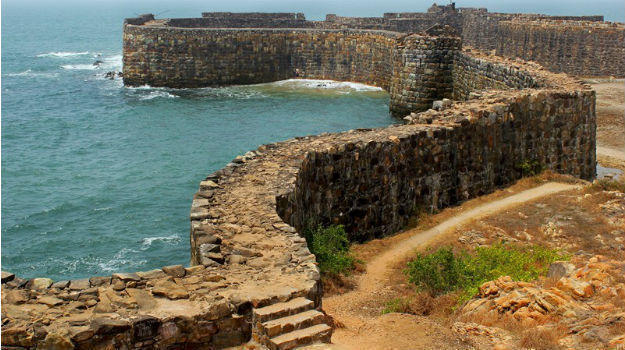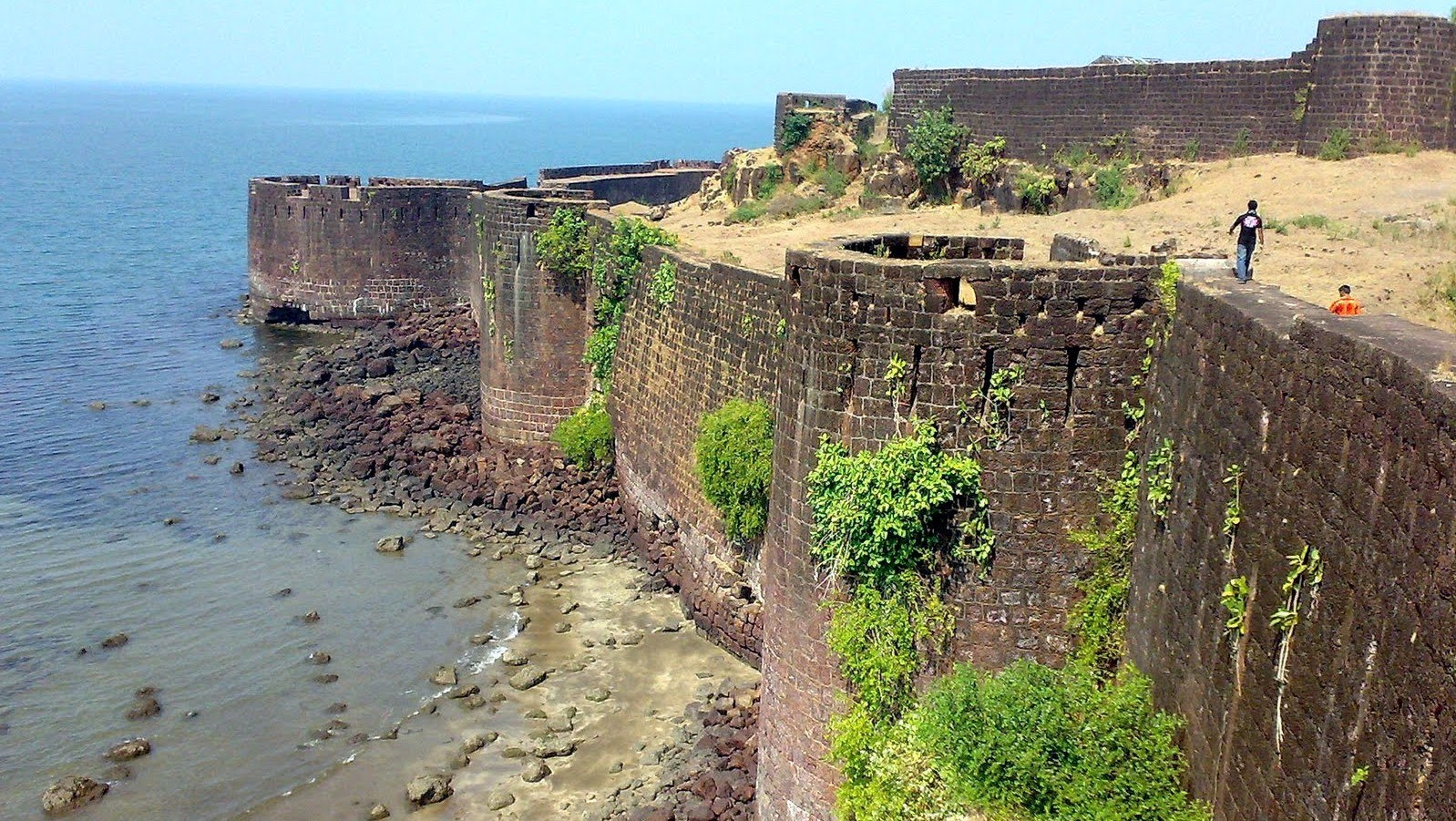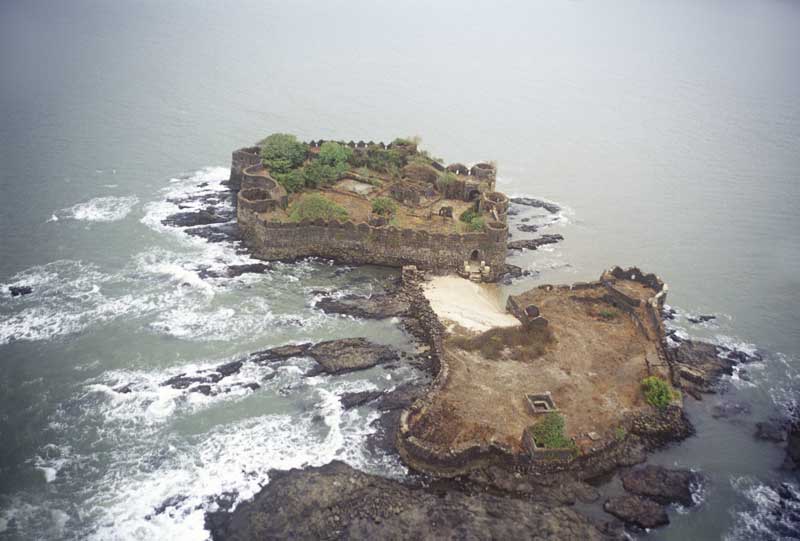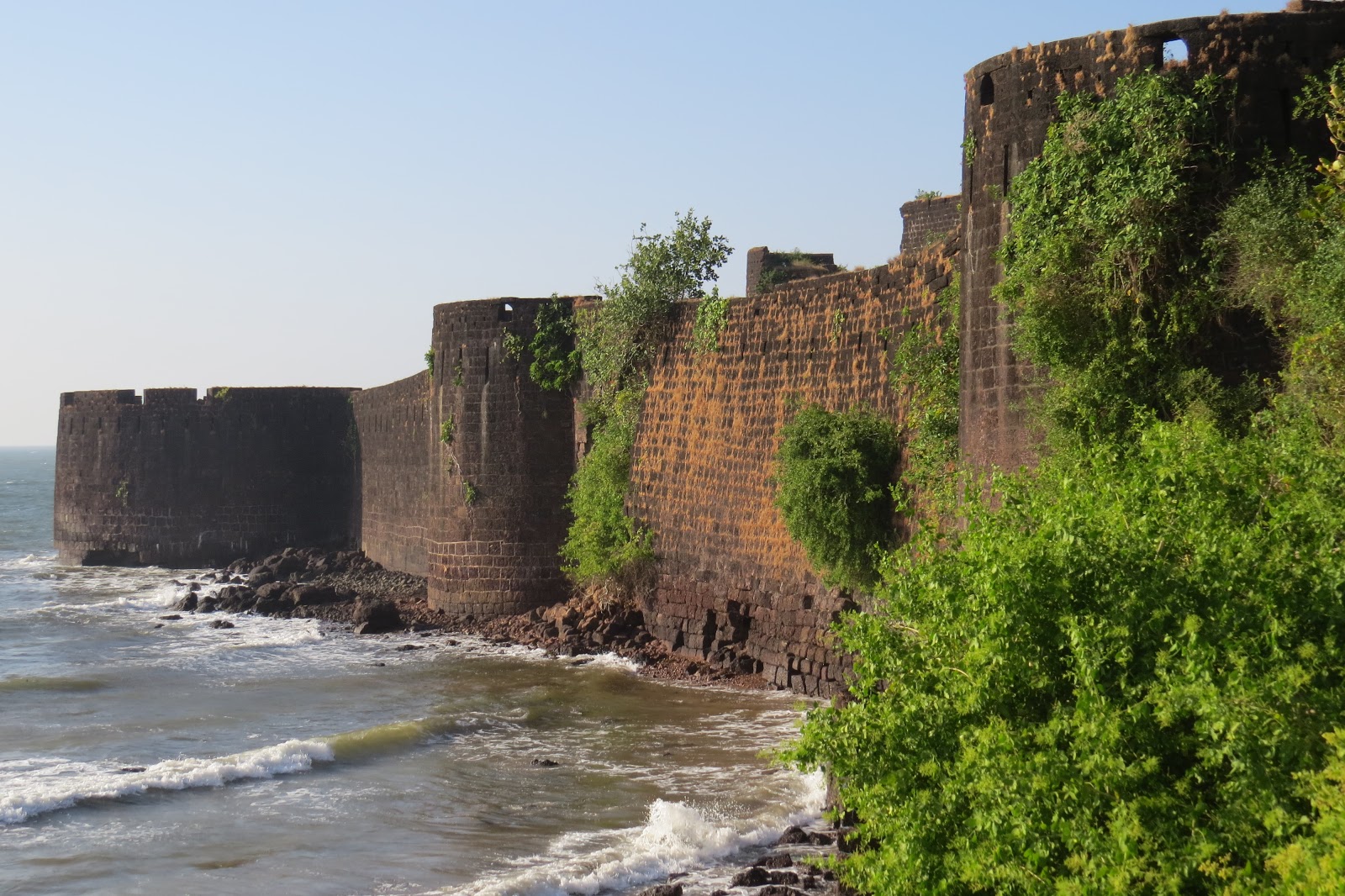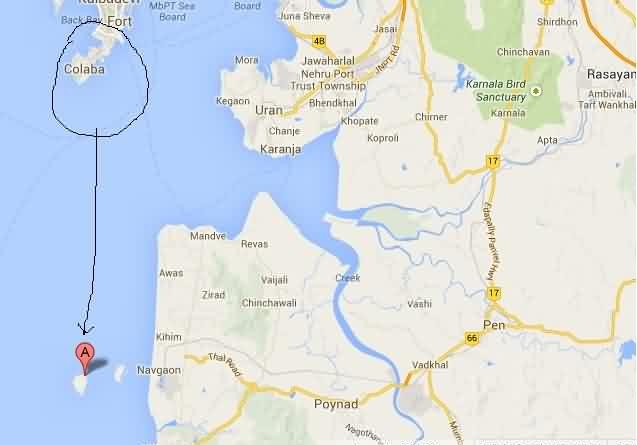Underi was a naval base of the Maratha Empire, a fort that held out against England for decades. A once integral checkpoint for trade in the Konkan and a stunning palace, but now, an abandoned, ruined, overrun marine fort. This is what my impression of Underi was, when I saw it from a far, in the middle of the Arabian Sea last year. It’s brownish grey walls, with a single banyan tree arising from the ruins, like a natural landmark, capturing every passer-by’s attention. The tree was the island’s calling card, it seemed to capture the struggle the Marathas faced, as Britain slowly annexed its empire. This towering banyan tree made Underi an enigma, a pathway to another, medieval world. I remember a conversation I had had with my father at the time.
“Dad, can we go to Underi?”
“No, it’s too rocky for the boat, we’ll run aground.”
“How can we get onto Underi then? Can we take a dinghy there?”
“Unfortunately we can’t, it will still be too rocky, and since there is no beach or dock to land on, we won’t be able to dock it anywhere.”
“Wait dad, what if we went kayaking to Underi? Wouldn’t that work?”
“Yes! That will! You want to plan a trip there?”
This conversation and its captivating exterior made me determined to explore the abandoned fort of Underi, and a year later, I did manage to fulfil this dream.
Planning the trip to Underi was difficult, with the main concern being how to approach Underi Island from the appropriate distance and avoiding exposure to the open sea. Dad and I selected Thal Port as our starting point because it is the closest port to Underi, only 1.5 kilometres apart.
At 8:15 am on the 26th of January, after transporting the kayaks and getting the necessary permissions, dad and I cast off from Thal towards Underi. We left with an ebbing tide. The water was murky, and fog hung around. I thought I was in the Bermuda Triangle, with Underi being the one safe zone surrounded by mysterious waters. The rocky coastline around Thal nearly made me capsize, acting like a line of defense.
Despite this intimidating start, and the frigid waters, it was neither too choppy nor too windy to frighten me. As I paddled on, I realized that this idea of a ‘Bermuda Triangle’ was a fantasy that I had created, for I paddled across towards the island with ease. The first leg took us around half an hour. As we got closer to the island, I was awestruck by its beauty. I got to see those towering, steep walls up close, and to see five hundred years of history left me ready to jump into the water and swim to the shore. Unfortunately, we realized that we would be unable to land near these steep walls, because there was no beach. We decided to take the Western Approach and went behind, to the more exposed side of the island, which was in the lee of the land breeze.
This final stretch seemed to be more of a test than the initial half. It was a lot trickier to paddle through it because it was far more exposed to the sea. The initial passage was a strait between Thal and Underi, while the backside of the island did not have any physical barriers around it. The waves buffeted my kayak and the swell left me partially wet, with salt forming on my skin. Every now and then I’d hear a sound, and see some sort of movement around me. While turning to find the source of this sound, I’d find nothing. It was as if Underi was guarded by the supernatural, which aimed to scare those who wanted to visit the island. Nevertheless, I shook off my fears and paddled on.
When I reached behind the island, I found that there was no beach, but partially submerged rocky slopes acting like the final line of defense for the island. There were innumerable boulders scattered behind these slopes. I wondered whether we would be able to get onto the island. Getting off the kayaks and onto the slopes was cumbersome not only because of the strong tide and swell but also because the rocks were slippery and covered with moss. However, through all the pains and struggles, dad and I had made it to the island.
Just when I thought we had overcome all our problems, we noticed the tide turning and creep up onto the island. We now had a time limit to explore the island, for if we left too late, we would be at the mercy of the sea.
The walk to the fort was short but treacherous. The rocks were sharp and my feet were blue by the time we reached the top. By now I thought that Underi would be a wretched, hostile place, but instead, the first thing I saw was Khanderi Island separated by the sea and a reef, a stunning view!
Khanderi
We trudged on to arrive at abandoned structures, the possible remnants of a palace. I saw black stones, demarcating a vague outer wall, and another pile of rocks that looked like a well. The interiors however, were overrun with unkempt grass, which in some places cameupto four and a half feet! The lack of paths and countless thorny bushes made it difficult yet thrilling to explore the island. The ruins fascinated me. How many battles were fought here? Did KanhojiAngre, the famous Maratha general, actually build this fort himself? How did it survive the onslaught of the colonial powers for so long? These questions ran through my head as I walked in the tall grass. The historian within me came alive.
We also found a few areas to relax, like underneath the humongous Banyan Tree on the other edge of the island. This tree overlooked a rocky base and reef. This spectacular view made me ecstatic. At was at this moment when I felt the efforts of the expedition were worth it. I had conquered the three lines of defense and I had successfully navigated the ‘Bermuda Triangle’, to come to this magnificent view. The thrill of kayaking in the open sea and stumbling upon pieces of history made exploration so much fun for me. I did not want to leave.
As I got comfortable, dad said it was time to go; the tide was setting in. We hurried down those boulders with cut feet and broken sea-socks, and managed reach our boats in time. The island didn’t make it any easier for us to get back though. Getting onto my kayak was especially challenging. The choppy waves, the rising swell and tide and the lightness of my kayak made it nearly impossible for me to get on and secure myself without capsizing! The salt water stung my legs, making the pain unbearable. Nonetheless, with dad’s help and the support of a rock I managed to get on, and after dad got into his own kayak, we raced away from the island.
The final leg home was frightening. The winds had increased, the fog had worsened and the swell continued on to the protected side of the fort. I could not navigate my way around the fishing boats, rocks and nets. All I did was paddle against the tide and pray that I would reach Thal Port soon. Dad was further behind me, and at one point, I lost sight of him! I started to panic, and turned back, only to find him having a blast in the choppy weather. Thank god he was fine! After giving him a lecture, we quickly paddled and reached Thal within twenty-five minutes. This two-hour expedition was fabulous, and I got off my kayak with a big smile on my face. I had successfully completed my first open sea kayaking trip!
Looking back, Kayaking to Underi was a challenge, a cumbersome task but a phenomenal experience. I had not only paddled in the open sea but also managed to dock on land that did not have a beach. I overcame the tides and winds and realized that the initial fear I had of reaching the island was built up in my head. I now know that I do have the ability to kayak in the open sea. Moreover, the historic ruins of Underi have left me fascinated with Maratha Maritime History. I can’t wait to go back again, but this time, with a few others and introduce them to the enthralling field of maritime exploration!
We thank Vibhav for sharing with us his experience and congratulate him on completing his first sea kayaking expedition! Team IYP wishes him all the best and looks forward to sharing more of his gutsy and exciting expeditions.

